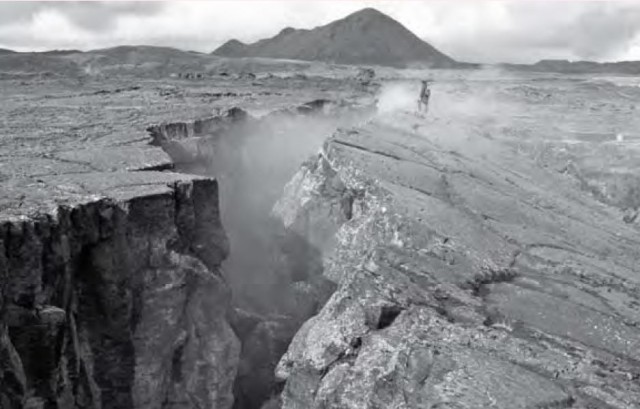Geosight #2: The Icelandic Ridge
The Mid-Atlantic Ridge is normally hidden below about 2.5km of seawater, where it can only be explored with high-technology submersibles and other expensive gear (see www.lostcity.washington.edu). But for a more accessible view of ocean floor spreading in action, get on a plane to Iceland. Iceland is located on a hot spot in the Earth's crust, meaning that far more lava is produced here than anywhere else on the Ridge, so much so that at this point it emerges above sea level.
On the island, there is constant volcanic activity and there are frequent earthquakes. The mechanism of ocean floor spreading is clearly visible, with volcanic eruptions causing long cracks to open up in the surface, which are filled by molten basalt. Along the plate boundary, which runs through the centre of the island from north to south, the rock is brand new, while at the edges, it dates back a few million years. But new vents emitting hot water and gases can erupt almost anywhere on the island, not just at the centre where the tourist spots such as Myvatn are. In the same way, the rest of the Mid-Atlantic Ridge is active across some undefined width, not just a narrow line of active volcanism.
